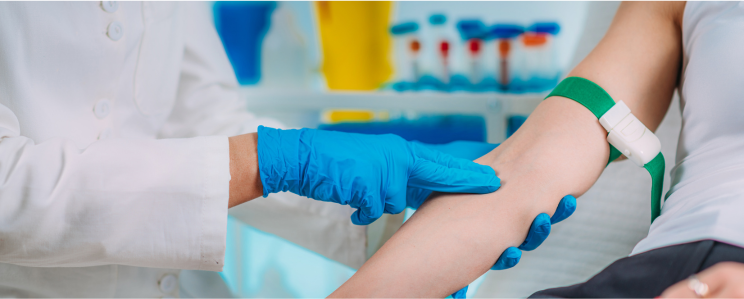5 Easy Facts About Northeast Medical Institute - New Haven Campus Phlebotomy Course & Cna Class Described
5 Easy Facts About Northeast Medical Institute - New Haven Campus Phlebotomy Course & Cna Class Described
Blog Article
Some Known Details About Northeast Medical Institute - New Haven Campus Phlebotomy Course & Cna Class
Table of ContentsAbout Northeast Medical Institute - New Haven Campus Phlebotomy Course & Cna ClassWhat Does Northeast Medical Institute - New Haven Campus Phlebotomy Course & Cna Class Do?The Ultimate Guide To Northeast Medical Institute - New Haven Campus Phlebotomy Course & Cna ClassSome Ideas on Northeast Medical Institute - New Haven Campus Phlebotomy Course & Cna Class You Should KnowSome Known Factual Statements About Northeast Medical Institute - New Haven Campus Phlebotomy Course & Cna Class The Northeast Medical Institute - New Haven Campus Phlebotomy Course & Cna Class Diaries
Nevertheless, making use of such devices ought to be accompanied by various other infection prevention and control methods, and training in their use. Not all safety devices are suitable to phlebotomy. Prior to picking a safety-engineered device, users should thoroughly explore offered gadgets to establish their suitable usage, compatibility with existing phlebotomy methods, and efficiency in shielding team and individuals (12, 33).For setups with low resources, cost is a driving consider procurement of safety-engineered gadgets - PCT Courses. Where safety-engineered tools are not readily available, competent usage of a needle and syringe serves. Unintended exposure and particular information about an incident should be recorded in a register. Assistance services should be advertised for those that go through unintended direct exposure.
One of the important pens of top quality of treatment in phlebotomy is the involvement and collaboration of the client; this is mutually valuable to both the wellness worker and the patient. Clear details either composed or spoken must be available to each person who undergoes phlebotomy. Annex F gives sample text for discussing the blood-sampling procedure to a patient. In the blood-sampling room for an outpatient division or facility, give a comfy reclining couch with an arm remainder.
All About Northeast Medical Institute - New Haven Campus Phlebotomy Course & Cna Class
Make sure that the indications for blood sampling are plainly specified, either in a written method or in recorded instructions (e.g. in a laboratory type). At all times, follow the approaches for infection avoidance and control detailed in Table 2.2. Infection prevention and control methods. Gather all the devices needed for the treatment and location it within risk-free and easy reach on a tray or trolley, making certain that all the things are clearly visible.
Introduce yourself to the individual, and ask the client to mention their complete name. Examine that the research laboratory type matches the individual's identity (i.e. match the person's details with the laboratory kind, to ensure exact recognition).
Make the client comfy in a supine position (if feasible). The patient has a right to refuse an examination at any time before the blood sampling, so it is essential to ensure that the person has comprehended the procedure - PCT Courses.
The Best Strategy To Use For Northeast Medical Institute - New Haven Campus Phlebotomy Course & Cna Class
Expand the person's arm and evaluate the antecubital fossa or forearm. Find a vein of a great dimension that is visible, straight and clear.
DO NOT insert the needle where blood vessels are drawing away, since this increases the opportunity of a haematoma. Locating the blood vessel will certainly aid in establishing the appropriate dimension of needle.
Haemolysis, contamination and existence of intravenous liquid and medicine can all change the outcomes (39. Nursing personnel and physicians may access central venous lines for specimens complying with protocols. Specimens from main lines bring a danger of contamination or wrong laboratory examination results. It is acceptable, yet not optimal, to draw blood specimens when initial introducing an in-dwelling venous tool, prior to linking the cannula to the intravenous liquids.
Northeast Medical Institute - New Haven Campus Phlebotomy Course & Cna Class for Dummies
Allow the area to completely dry. Failing to enable adequate get in touch with time boosts the danger of contamination. DO NOT touch the cleansed site; particularly, DO NOT position a finger over the blood vessel to assist the shaft of the revealed needle. It the site is touched, repeat the sanitation. Execute venepuncture as complies with.
Ask the individual to create a fist so the veins are a lot more noticeable. Get in the vein swiftly at a 30 degree angle or less, and continue to introduce the needle along the capillary at the most convenient angle of entrance - CNA Courses. As soon as sufficient blood has been collected, launch the tourniquet prior to withdrawing the needle
The Facts About Northeast Medical Institute - New Haven Campus Phlebotomy Course & Cna Class Revealed
Withdraw the needle delicately and use gentle stress to the site with a clean gauze or dry cotton-wool round. Ask the patient to hold the gauze or read the full info here cotton woollen in position, with the arm prolonged and raised. Ask the person NOT to bend the arm, because doing so creates a haematoma.

All About Northeast Medical Institute - New Haven Campus Phlebotomy Course & Cna Class
Do not press the syringe plunger because additional stress raises the danger of haemolysis. Where possible, keep televisions in a rack and relocate the shelf towards you. Inject downwards right into the proper coloured stopper. DO NOT eliminate the stopper because it will certainly launch the vacuum. If the example tube does not have a rubber stopper, inject extremely gradually right into television as lessening the stress and speed used to move the specimen minimizes the threat of haemolysis.

Report this page